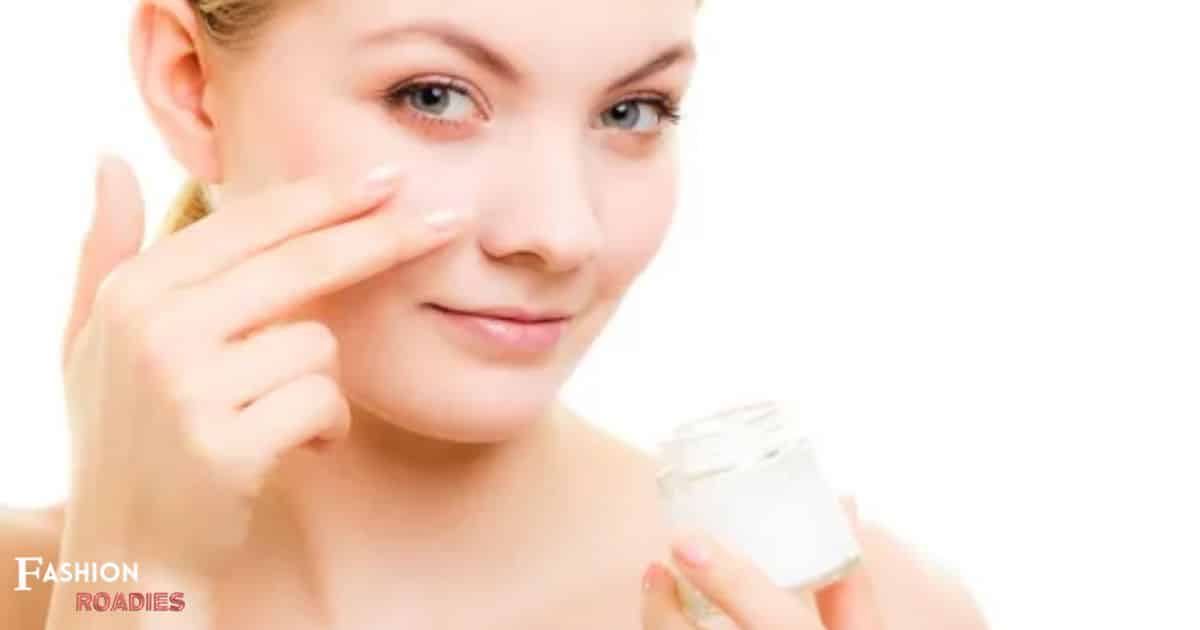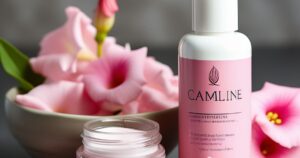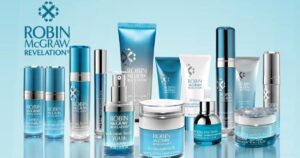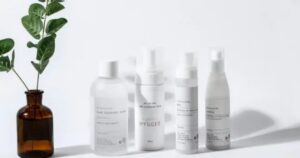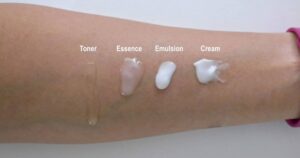Imagine your skin as a delicate symphony, each product playing its part to create a harmonious and radiant complexion. But with countless skincare products available, finding the right order can be overwhelming. Fear not, for this article will guide you through the steps of a meticulous skincare routine. Based on expert advice and scientific evidence, we will explore the optimal sequence for applying cleansers, toners, serums, eye creams, moisturizers, sunscreens, and special treatments. Get ready to join the skincare chorus and achieve the healthy, glowing skin you desire.
Key Takeaways
- Double cleansing, which involves using an oil-based cleanser followed by a water-based cleanser, is beneficial for improved skin texture and reduced breakouts.
- Serums, applied before moisturizer, deliver active ingredients deep into the skin, targeting specific skin concerns and improving skin texture and signs of aging.
- Regularly incorporating eye cream reduces the appearance of dark circles and fine lines, hydrates the skin, and improves elasticity.
- Moisturizers maintain optimal hydration levels, protect the skin barrier, and improve skin texture, tone, and elasticity. Additionally, sunscreen is crucial in protecting from harmful UV rays and reducing the risk of sunburn, skin cancer, and premature aging.
Cleansing
Proper cleansing plays a vital role in maintaining the overall health and appearance of the skin. One popular cleansing technique gaining recognition is double cleansing. This involves using an oil-based cleanser to remove makeup, excess oil, and impurities, followed by a water-based cleanser to deeply cleanse the skin. The benefits of double cleansing include improved skin texture, reduced breakouts, and enhanced absorption of subsequent skincare products.
When it comes to choosing a cleanser, there are different types available in the market. Foaming cleansers are suitable for oily skin types as they help remove excess sebum. Cream cleansers are more moisturizing and ideal for dry or sensitive skin. Gel cleansers are lightweight and suitable for normal to combination skin. Finding the right cleanser for your skin type is crucial to ensure effective cleansing without stripping away essential moisture.
Transitioning into the subsequent section about ‘toning’, after proper cleansing, toning is the next step in a skincare routine.
Toning
Using a toner after cleansing helps to remove any remaining impurities and balance the skin’s pH levels. Toning is an essential step in any skincare routine as it prepares the skin for the next steps of your regimen. Toning helps to remove any traces of dirt, oil, or makeup that may have been missed during cleansing, ensuring a thorough cleanse. Additionally, toners help to restore the skin’s natural pH levels, which can be disrupted by harsh cleansers. This is important because maintaining a balanced pH level in the skin helps to support its natural barrier function and overall health. There are various toning techniques available, including using a cotton pad or spritzing directly onto the skin. Ultimately, the importance of toning lies in its ability to provide a clean, balanced canvas for the rest of your skincare products to work effectively.
Serums
Serums are an essential step in any skincare routine. They are lightweight, highly concentrated formulas that deliver active ingredients deep into the skin. By applying serums before moisturizer, you can enhance their effectiveness and target specific skin concerns such as aging, hyperpigmentation, or dehydration.
Serums Before Moisturizer
Applying a maximum of two serums before moisturizer can enhance the efficacy of your skincare routine. When it comes to serums, they are highly concentrated formulas that are designed to target specific skin concerns. By incorporating serums into your skincare routine, you can effectively address issues such as acne and signs of aging. Here are four key reasons why applying serums before moisturizer is beneficial:
- Increased absorption: Serums have smaller molecules that penetrate deep into the skin, allowing active ingredients to be absorbed more effectively.
- Layering benefits: By applying serums before moisturizer, you create a barrier that locks in the active ingredients, maximizing their effectiveness.
- Targeted treatment: Serums can be specifically formulated to address acne or anti-aging concerns, providing targeted solutions.
- Enhanced hydration: Moisturizers help seal in the benefits of serums, providing long-lasting hydration and nourishment.
Benefits of Using Serums
The utilization of serums in a skincare routine offers numerous advantages, such as improved skin texture and minimized signs of aging. Serums are lightweight, fast-absorbing formulations that contain high concentrations of active ingredients. When applied before moisturizer, serums can penetrate deeper into the skin, delivering targeted benefits. One of the key benefits of serum application is its ability to enhance skin texture. Serums often contain ingredients like hyaluronic acid and vitamin C, which promote hydration and collagen production, resulting in smoother and more radiant skin. Additionally, serums can help minimize signs of aging, such as fine lines and wrinkles, by providing antioxidant protection and stimulating cell turnover. By incorporating serums into your skincare routine, you can address specific concerns and achieve healthier, more youthful-looking skin. Now let’s explore serums for specific concerns.
Serums for Specific Concerns
Addressing specific skincare concerns requires tailoring serums to target individual needs, allowing for personalized and effective treatment. When it comes to serums, there are a variety of options available to address different concerns. Here are four types of serums that can help target specific skincare concerns:
- Hydrating serums: These serums are formulated to provide intense hydration to the skin, helping to combat dryness and improve overall skin texture.
- Brightening serums: Designed to reduce the appearance of dark spots and uneven skin tone, these serums often contain ingredients like vitamin C or niacinamide.
- Anti-aging serums: These serums are packed with ingredients like retinol and peptides that help to reduce the appearance of fine lines and wrinkles, promoting a more youthful complexion.
- Sensitive skin serums: Formulated with gentle ingredients like chamomile or aloe vera, these serums are suitable for those with sensitive skin, providing soothing and calming effects.
Transition: While serums are an important step in any skincare routine, it’s also crucial to incorporate eye cream to address the delicate skin around the eyes.
Eye Cream
Regularly incorporating eye cream into your skincare routine can effectively reduce the appearance of dark circles and fine lines around the delicate eye area. The skin around the eyes is thinner and more prone to showing signs of aging, making it crucial to use a targeted product like eye cream. Eye cream benefits include hydrating the skin, improving elasticity, and reducing puffiness. It also helps to protect the delicate skin from environmental damage and prevent the formation of wrinkles. When choosing the best eye cream, look for ingredients like retinol, hyaluronic acid, peptides, and vitamin C, which have been proven to be effective in reducing dark circles and fine lines. Remember to gently apply the eye cream using your ring finger and pat it around the eye area, avoiding rubbing or pulling on the skin. Incorporating eye cream into your skincare routine can be a simple yet effective way to maintain youthful and vibrant-looking eyes.
Moisturizer
Applying a pea-sized amount of moisturizer to your face and neck can help maintain optimal hydration levels and protect your skin barrier. Moisturizers offer a range of benefits that go beyond just hydration. Here are four key reasons why choosing the right moisturizer is crucial:
- Hydration: Moisturizers replenish moisture in your skin, preventing dryness and flakiness.
- Barrier protection: A good moisturizer forms a protective barrier on the skin, shielding it from external aggressors like pollution and harsh weather conditions.
- Anti-aging effects: Moisturizers with ingredients like antioxidants and peptides help minimize the appearance of fine lines and wrinkles, promoting a youthful complexion.
- Skin health maintenance: Regular use of a moisturizer helps maintain the overall health of your skin by improving its texture, tone, and elasticity.
When selecting a moisturizer, consider your skin type, specific concerns, and ingredients that suit your needs. Remember, a well-chosen moisturizer can provide numerous benefits for your skin’s health and appearance.
Sunscreen
Ensuring adequate protection from harmful UV rays, it is essential to incorporate sunscreen into your daily skincare routine. Sunscreen not only helps prevent sunburn but also reduces the risk of skin cancer and premature aging. When it comes to applying sunscreen, it is important to follow proper techniques to maximize its effectiveness. Start by choosing a broad-spectrum sunscreen with a Sun Protection Factor (SPF) of at least 30. Apply it generously to all exposed areas of the skin, including the face, neck, arms, and legs. Remember to reapply every two hours, or more frequently if sweating or swimming. For optimal protection, apply sunscreen 15 minutes before sun exposure. By incorporating these application techniques and following SPF recommendations, you can ensure that your skin is adequately protected from the damaging effects of the sun.
Special Treatments
Special treatments for the skin include acne spot treatments, anti-aging serums, and brightening and exfoliating products. Acne spot treatments are designed to target and treat individual blemishes, while anti-aging serums aim to reduce the appearance of fine lines and wrinkles. Brightening and exfoliating products help to improve skin tone and texture, resulting in a more radiant complexion. These special treatments can be incorporated into a skincare routine to address specific concerns and enhance overall skin health.
Acne Spot Treatments
Two common acne spot treatments include benzoyl peroxide and salicylic acid. These ingredients are widely used for their effectiveness in treating acne breakouts. When it comes to acne prevention and spot treatment, it is important to understand the benefits and limitations of each ingredient.
- Benzoyl peroxide: This ingredient works by killing the bacteria that cause acne and reducing inflammation. It is effective in treating mild to moderate acne and can be found in various forms such as cleansers, creams, and gels.
- Salicylic acid: This ingredient helps to unclog pores and exfoliate the skin, preventing the formation of new acne. It is particularly beneficial for those with oily skin and blackheads.
- Combination therapy: Some individuals may benefit from using both benzoyl peroxide and salicylic acid together. This combination can target different aspects of acne and provide better results.
- Individualized approach: It is important to remember that everyone’s skin is unique, and what works for one person may not work for another. It is recommended to consult with a dermatologist to determine the best spot treatment ingredients for your specific needs.
Anti-Aging Serums
When considering anti-aging serums, it is essential to understand the ingredients and their efficacy in reducing the signs of aging. The best ingredients to look for in an anti-aging serum include retinol, hyaluronic acid, vitamin C, and peptides. Retinol is a powerful ingredient that helps stimulate collagen production and reduce the appearance of fine lines and wrinkles. Hyaluronic acid is a hydrating ingredient that plumps the skin and improves its texture. Vitamin C is a potent antioxidant that brightens the complexion and protects the skin against environmental damage. Peptides are amino acids that help promote collagen and elastin production, resulting in firmer and more youthful-looking skin. To maximize the benefits of an anti-aging serum, it is important to apply it correctly. Start by cleansing and toning your skin, then apply a small amount of serum to your face and neck. Gently massage it into the skin using upward motions until fully absorbed. Follow with a moisturizer to lock in the serum’s benefits. By understanding the best ingredients and application techniques for anti-aging serums, you can effectively reduce the signs of aging and maintain a youthful complexion.
Brightening and Exfoliating
The brightening and exfoliating treatments available in the market offer various benefits for improving skin texture and promoting a more radiant complexion. These techniques have gained popularity due to their effectiveness in addressing common skin concerns. Here are four key benefits of incorporating exfoliating and brightening techniques into your skincare routine:
- Enhanced skin cell turnover: Exfoliating helps remove dead skin cells, allowing new, healthy cells to come to the surface. This results in a smoother and more even complexion.
- Improved skin tone: Brightening treatments target hyperpigmentation and dark spots, helping to even out skin tone and reduce the appearance of discoloration.
- Increased collagen production: Exfoliating stimulates collagen production, which can help reduce the signs of aging and improve skin elasticity.
- Enhanced product absorption: By exfoliating regularly, you can remove the buildup of dead skin cells, allowing your skincare products to penetrate deeper into the skin and work more effectively.
Incorporating exfoliating and brightening techniques into order should you apply skincare routine can help you achieve a healthier, more youthful-looking complexion.
Frequently Asked Questions
Can I Skip Toning if I Already Cleanse My Skin Thoroughly?
Toning can provide additional benefits even after thorough cleansing. It helps restore the skin’s pH balance, removes any remaining impurities, and prepares the skin for better absorption of subsequent skincare products. Therefore, it is not recommended to skip toning.
Should I Apply Eye Cream Before or After Serums?
The order of application in a skincare routine is crucial for maximum efficacy. When it comes to eye cream, it is recommended to apply it after serums to ensure proper absorption and targeted treatment for the delicate eye area.
Can I Use Multiple Serums at the Same Time?
Combining serums can be beneficial in a skincare routine as long as the products are compatible and applied in the correct order. Layering skincare products allows for maximum absorption and effectiveness, resulting in healthier and more radiant skin.
Is It Necessary to Use a Separate Moisturizer if My Sunscreen Is Already Moisturizing?
Using a separate moisturizer is still necessary even if your sunscreen claims to moisturize. Sunscreen moisturizers may not provide adequate hydration, while a separate moisturizer can offer additional benefits like nourishment and anti-aging properties.
How Often Should I Incorporate Special Treatments Into My Skincare Routine?
Incorporating special treatments into your skincare routine depends on the specific treatment and your skin’s needs. It is recommended to consult with a dermatologist to determine the optimal frequency and order of application for maximum effectiveness.
Conclusion
In conclusion, following a proper order in applying skincare products is essential for optimal results. Starting with cleansing to remove impurities, toning to balance the pH of the skin, and using serums to address specific concerns, such as hydration or anti-aging. Eye cream should be gently applied to the delicate eye area, followed by moisturizer to lock in hydration. Lastly, sunscreen should be applied daily to protect the skin from harmful UV rays. Incorporating these steps into a skincare routine can promote healthier and more radiant skin.
